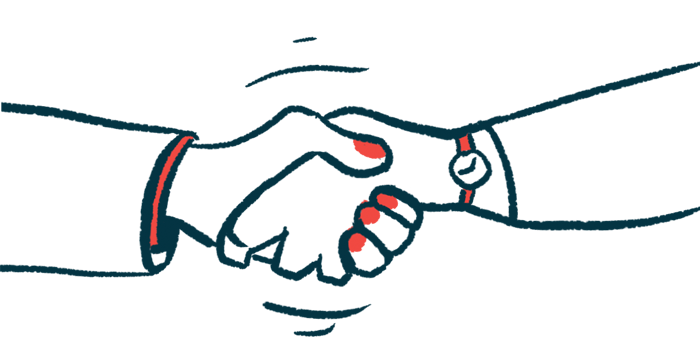Takeda acquires license to ALS therapy aimed at toxic TDP-43
AS-202 designed to block enzyme with role in misfolded protein's buildup

Takeda has obtained an exclusive, worldwide license to AcuraStem’s investigational therapies targeting the PIKfyve enzyme, including AS-202, a potential treatment for amyotrophic lateral sclerosis (ALS) that ultimately aims to lower toxic TDP-43 protein buildup in nerve cells.
While Takeda will be responsible for clinical development, regulatory affairs, and global commercialization, AcuraStem will contribute to work in AS-202’s preclinical development, including running clinical trial-enabling studies and characterizing potential alternative PIKfyve-targeted therapies.
“Our mission at AcuraStem is to get our promising therapeutics to the patients who need them as quickly as possible,” Sam Alworth, CEO of AcuraStem, said in a company press release. “We are delighted to have secured a partner in Takeda who has the world class clinical development and commercial capabilities to deliver on our mission.”
TDP-43 in ALS accumulates in nerve cells, ultimately killing them
AcuraStem will receive upfront and milestone payments totaling about $580 million during the agreement’s term if all future clinical, regulatory, and commercial milestones are met. It also will earn royalties on commercial sales should any products reach the market.
In about 97% of ALS patients, including both familial ALS and sporadic disease cases, a misfolded version of the TDP-43 protein accumulates in nerve cells.
While TDP-43 normally is found in the cell’s nucleus, the abnormal protein toxically clumps outside the nucleus, disrupting the function and health of the motor nerve cells needed to control voluntary movement, causing disease symptoms.
AS-202 is designed to activate multivesicular body (MVB) exocytosis, a process essentially involved in engulfing cellular waste and unwanted proteins and facilitating their removal.
The therapy belongs to a class of small molecules called antisense oligonucleotides, or ASOs, which bind to DNA or RNA and block their ability to produce a protein. In this case, AS-202 boosts MVB exocytosis by blocking production of the PIKfyve enzyme, which regulates that process.
AcuraStem expects that AS-202 will promote the clearance of misfolded TDP-43, thereby preventing the neurodegeneration that characterizes ALS and frontotemporal dementia (FTD), a related condition also marked by toxic TDP-43 buildup.
The therapy is designed to be delivered directly into the central nervous system, or the brain and spinal cord, via an injection into the spinal canal. Called an intrathecal injection, this approach aims to protect nerve cells, while avoiding the toxicity associated with a lack of PIKfyve activity elsewhere in the body.
AS-202 seen in animal studies to help clear misfolded clumps of TDP-43 in cells
Preclinical studies in animal models of ALS and FTD demonstrated that AS-202 effectively reduced TDP-43 protein clumps, in addition to easing neurodegeneration, restoring motor function, and improving the animals’ survival.
Justin Ichida, PhD, AcuraStem’s co-founder, initially identified PIKfyve as a promising target for treating ALS across disease subtypes in his laboratory at the University of Southern California.
“We originally identified PIKFYVE … using nerve cells derived from [ALS] patient stem cells, and this illustrates the power of using this modern approach,” Ichida said.
After licensing this therapeutic approach from the university, AcuraStem developed AS-202 using its iNeuroRx platform, which couples patient-derived disease models with human genetic data to identify clinical treatment candidates.
“We look forward to building on AcuraStem’s work to progress this exciting science into development and to patients,” said Sarah Sheikh, head of the neuroscience therapeutic area unit at Takeda.
AcuraStem is continuing work on other therapeutic approaches to ease TDP-43 pathology in ALS and FTD, including ASOs targeting the UNC13A and SYF2 proteins. These programs are not covered by the licensing agreement with Takeda.







